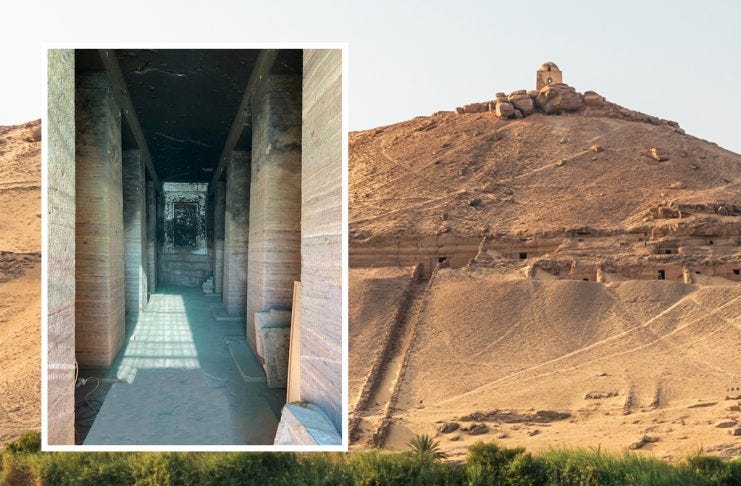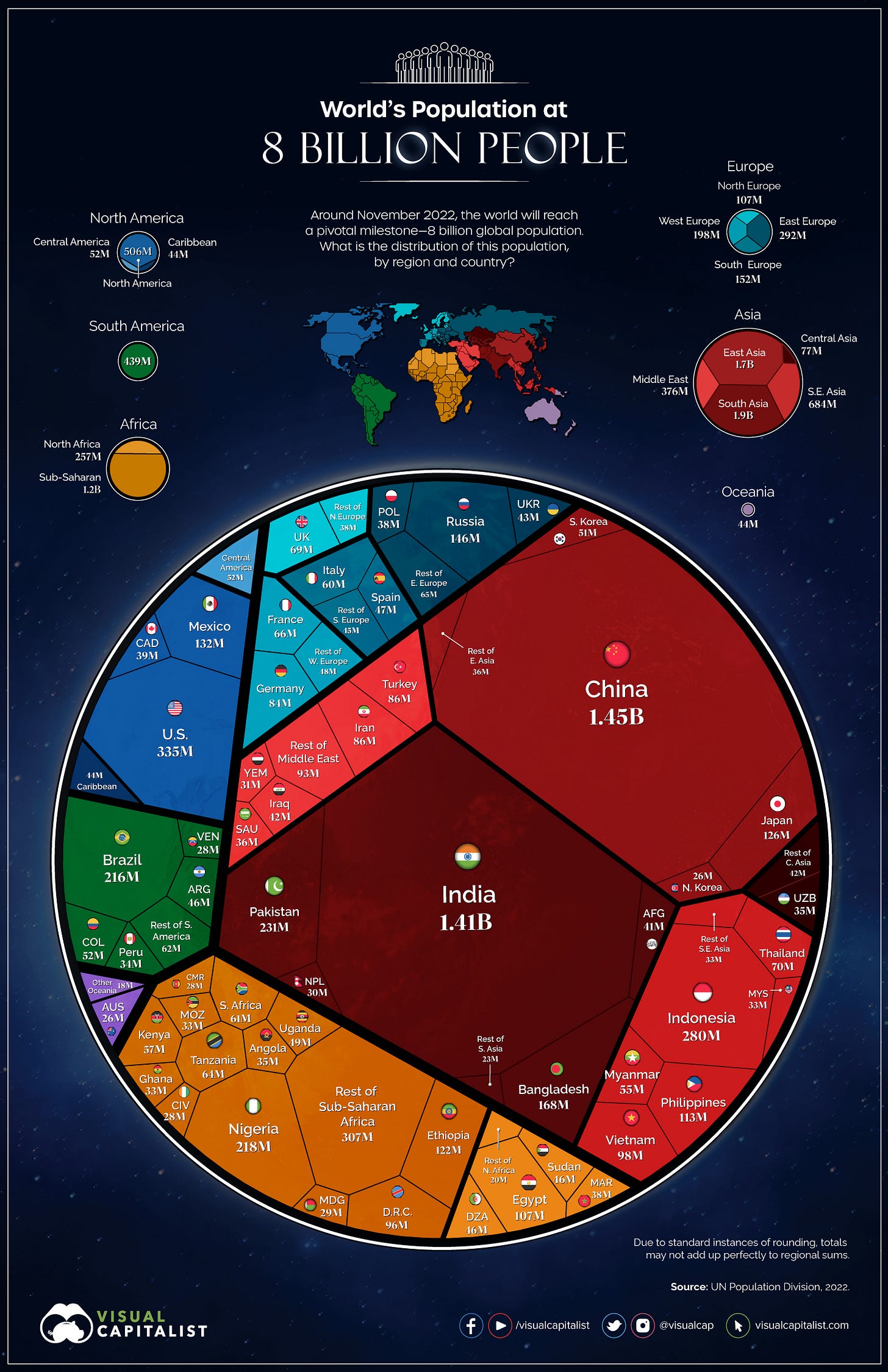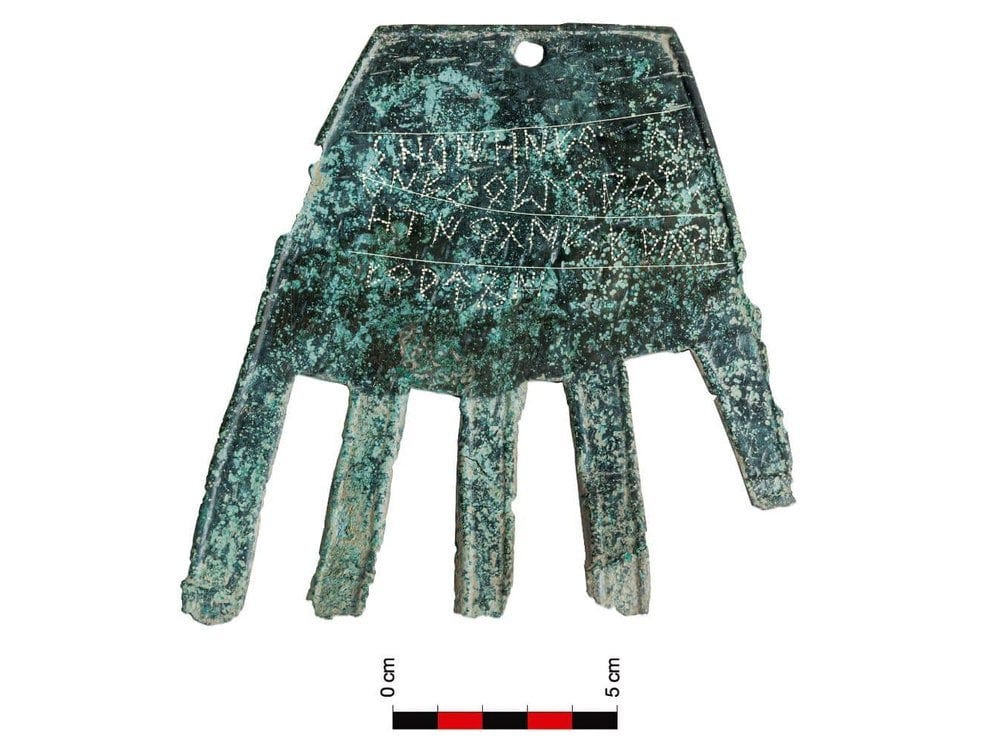Ancient/Now - November 25th
Tut's treasures, pseudo-archaeology, and population change-- some of our thoughts from the past week!
Decoding Tutankhamun: Understanding the Tomb and its Treasures
An ongoing debate within Egyptology is how representative Tutankhamun’s tomb is. In other words, did Tutankhamun’s tomb hold more or less treasures compared to other kings? The argument being that if Tut, a minor short-lived king had such lavish grave goods, then kings like Thutmose III, Amenhotep III, and Ramses the Great must have had ten times more. Peter Lacovara, however, argues that Tut’s tomb was actually the richest deposit in Egyptian history. His argument is hinged on the fact that Tutankhamun was buried with multiple sets of many grave goods of Amarna royal family members, in addition to the richness of the late 18th Dynasty as evidence by his grandfather Amenhotep III’s court. Lacovara sees Tutankhamun as the ultimate heir of this 18th Dynasty excess.
However, one could argue that royal burial practices changed from the 18th to 19th Dynasties, so much so that this comparison is quite difficult. By the 19th and 20th dynasties, kings and elites alike were avoiding vast quantities of “daily life” goods, those chariots and clothes and furniture that were stuffed into Tutankhamun’s tomb. More and more, there was interest in burying the elite and royal dead with high-cost objects that had only a funerary purpose. Making all the tomb treasures religiously charged made their re-commodification that much harder. In other words, it’s morally easy to steal some daily life treasures from a tomb.
For instance, a bundle of five golden rings was found in Tutankhamun’s tomb corridor, a remnant of an unsuccessful theft. But taking a ritually charged, religious object had a higher moral cost. That’s arguably why 19th Dynasty kings chose to focus their riches on their ritually charged funerary assemblages, which were then buried in highly protective nesting stone sarcophagi.
In short, Kara thinks the 19th and 20th Dynasty kings probably had sets of nesting solid gold coffins (or silver ones like those found at Tanis), instead of the one golden coffin and two gold covered wooden coffins Tutankhamun had. In fact, none of the preserved New Kingdom royal coffins date to the 19th or 20th Dynasty. All preserved royal coffins date to the 18th Dynasty. In her forthcoming book Recycling for Death, Kara argues that 18th Dynasty coffins were preserved because recommodification didn’t destroy the coffin itself. Whereas if a coffin was entirely of gold and precious stones, well, that would not have survived the Late Bronze recommodification. Those objects were literally melted into the Late Bronze economy. In other words, the lack of preserved coffins can be used to argue that the Ramesside tombs were much richer than Tutankhamun’s. But, we will never really know, will we? We are simply piecing arguments together from very incomplete information…

With Netflix’s Ancient Apocalypse, Graham Hancock has declared war on archaeologists
Grr!!! How is this a show number #1 on Netflix!?! This excellent piece by Flint Dibble addresses the abhorrent attacks by Hancock against academia and archaeologists. This show perpetuates the idea that there was once an ice age global civilization— shockingly similar late 19th century theories of a white, Aryan civilization that was responsible for many of the ancient world’s achievements. The pyramids could not have been built by an African civilization, they argue. The amazing architecture and inventions of the Mesoamerican cultures could not have been indigenous, they say.
This show and other like it (read: Ancient Aliens) promote racist, out-dated notions that prey on the public’s desire to learn more about the ancient world, a topic which they are clearly interested in. But the core of such anti-intellectualism is basic White Supremacy—because according to Hancock accredited archaeologists are all part of some vast conspiracy to keep these things secret. (Someone tell us if we have such a secret club!) Why do Netflix and the History Channel create such shows and give a space for these conspiracy theories? Shame on Netflix!
New Research Reveals Oldest Ancient Egyptian Tomb Oriented to Winter Solstice
This makes our astrological hearts sing! Researchers have found that a Middle Kingdom tomb from Qubbett el-Hawa, near Aswan, Egypt, was constructed to align with the Winter Solstice. Given the Egyptian’s association of death with the setting of the sun, the alignment of the tomb entrance with the Winter solstice linked the tomb owner with the greater solar cycle of rebirth—the beginning of the sun’s triumph over darkness.

World Population Reaches 8 Billion, U.N. Says
Dear readers, the world’s population has officially reached 8 billion people. What would the ancients think of this many people hoarding and wasting resources? What would they think of the interconnectivity so many of us have? With increasing resource scarcity, global pandemics, and anthropogenic climate change, how will human populations adapt and change? We study “collapses” in the ancient world— particularly the Late Bronze Age collapse of the Eastern Mediterranean and thus this time period provides some real-time datapoints, but on a much more massive scale. The earth’s carrying capacity is quickly being approached. What is in store for us next? The one thing past collapses teach us is that human are highly resilient, so let’s see how we do…

This 2,000-Year-Old Inscription Changes Our Understanding of the Basque Language
After the cleaning and conserving of a bronze “hand” from the site near Pamplona, researchers found lines of text inscribed on the palm. They believe the text represents the Euskara language, the language that pre-dates modern Basque, given the close similarities in certain words. Being a so-called language isolate, Basque is not related to other languages of the Iberian peninsula; nor is it derived from the Indo-European language family. This discovery helps scholars to reconstruct the origins of modern Basque and the cultural groups that gave rise to the language (including their interactions with the the Romans, given their adoption of the Latin alphabet).

Happy Thanksgiving from the Afterlives Crew!!
We are so thankful and appreciative of your support. We love bringing you our weekly take on ancient world and archaeology headlines in the news and other posts. Thank you for being a part of our growing online community!





